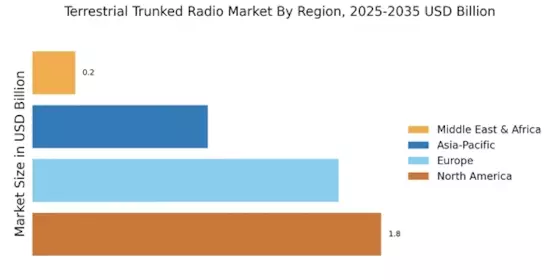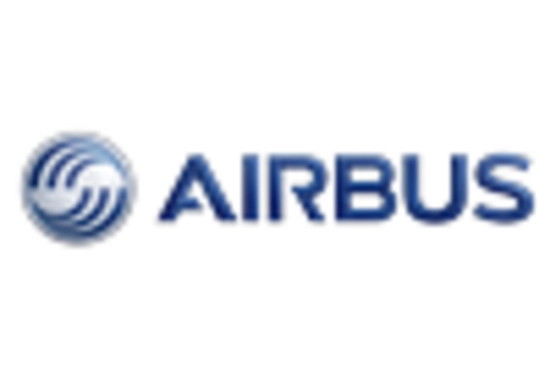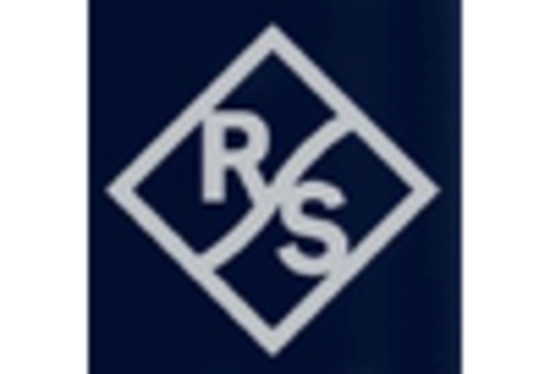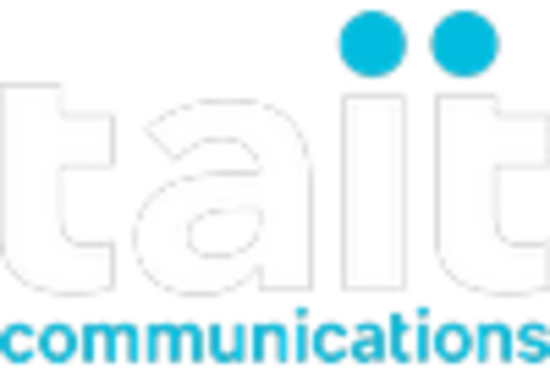Expansion of Public Safety Networks
The expansion of public safety networks is a crucial driver for the Terrestrial Trunked Radio Market. As cities and regions invest in modernizing their emergency response systems, the demand for robust communication solutions is increasing. This trend is particularly evident in urban areas where population density necessitates efficient coordination among various emergency services. The market is expected to witness substantial growth, with estimates suggesting an increase in market size by approximately 15% over the next five years. Enhanced interoperability and reliability of terrestrial trunked radio systems are essential for effective emergency management, thereby propelling market expansion.
Growing Need for Reliable Communication
The Terrestrial Trunked Radio Market is experiencing a surge in demand for reliable communication systems across various sectors. Organizations, particularly in emergency services, public safety, and transportation, require uninterrupted communication capabilities. This need is driven by the increasing complexity of operations and the necessity for real-time information sharing. As a result, the market is projected to grow at a compound annual growth rate of approximately 7% over the next few years. The reliability offered by terrestrial trunked radio systems ensures that critical communications are maintained, even in challenging environments, thereby enhancing operational efficiency and safety.
Rising Adoption in Transportation Sector
The transportation sector is increasingly adopting terrestrial trunked radio systems, which is a significant driver for the Terrestrial Trunked Radio Market. With the growing need for efficient communication among transport operators, logistics companies, and regulatory authorities, the demand for reliable communication solutions is on the rise. This sector's adoption is expected to contribute to a market growth rate of around 8% annually. Enhanced communication capabilities facilitate better coordination, safety, and efficiency in transportation operations, making terrestrial trunked radio systems an attractive option for stakeholders in this industry.
Regulatory Support for Digital Communication
Regulatory bodies are increasingly recognizing the importance of secure and efficient communication systems, which is positively impacting the Terrestrial Trunked Radio Market. Governments are implementing policies that promote the adoption of digital communication technologies, particularly in sectors such as public safety and transportation. For instance, initiatives aimed at upgrading communication infrastructure are expected to drive market growth. The market is anticipated to reach a valuation of over USD 5 billion by 2026, as organizations seek to comply with these regulations while enhancing their communication capabilities. This regulatory support is likely to foster innovation and investment in the industry.
Technological Advancements in Communication Systems
Technological advancements are significantly influencing the Terrestrial Trunked Radio Market. Innovations such as improved encryption methods, enhanced audio quality, and integration with broadband technologies are reshaping communication systems. These advancements not only enhance the functionality of terrestrial trunked radios but also expand their applicability across various sectors, including transportation, utilities, and public safety. The market is projected to grow as organizations increasingly adopt these advanced systems to improve operational efficiency. The integration of new technologies is likely to create opportunities for market players to develop more sophisticated communication solutions.

















Leave a Comment